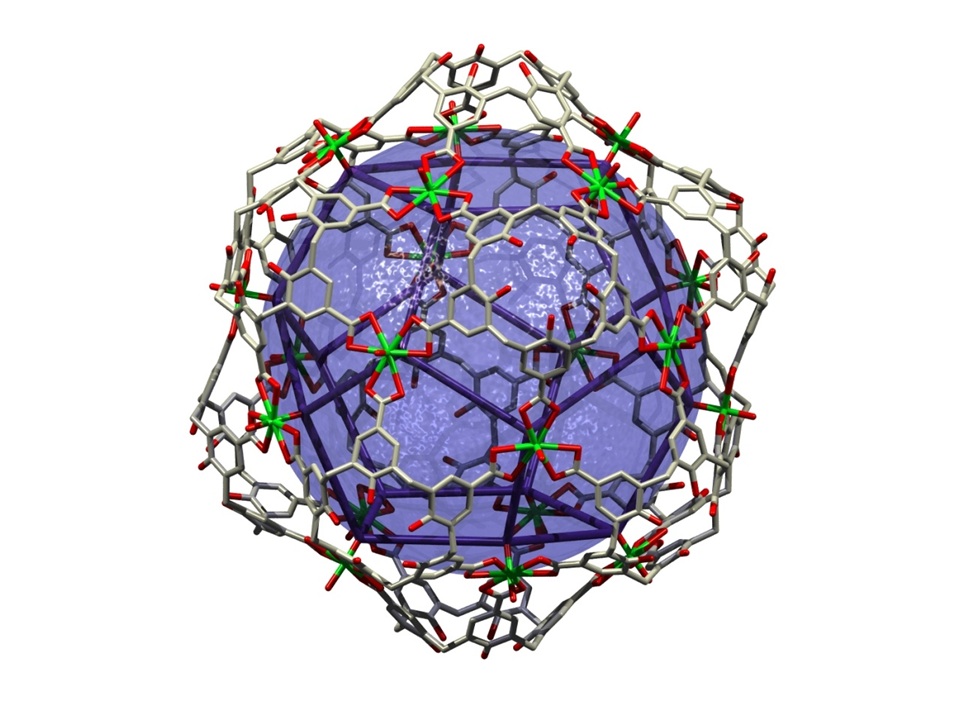Self-assembly of large multi-component systems is a common strategy for the bottom-up construction of discrete, well-defined, nanoscopic-sized cages. Icosahedral or pseudospherical viral capsids, built up from hundreds of identical proteins, constitute typical examples of the complexity attained by biological self-assembly. Chemical versions of the so-called 5 Platonic regular or 13 Archimedean semi-regular polyhedra are usually assembled combining molecular platforms with metals with commensurate coordination spheres. Here we report novel, self-assembled cages, using the conical-shaped carboxylic acid derivatives of calix[4]arene and calix[5]arene as ligands, and the uranyl cation UO22+ as a metallic counterpart, which coordinates with three carboxylates at the equatorial plane, giving rise to hexagonal bipyramidal architectures. As a result, octahedral and icosahedral anionic metallocages of nanoscopic dimensions are formed with an unusually small number of components.
